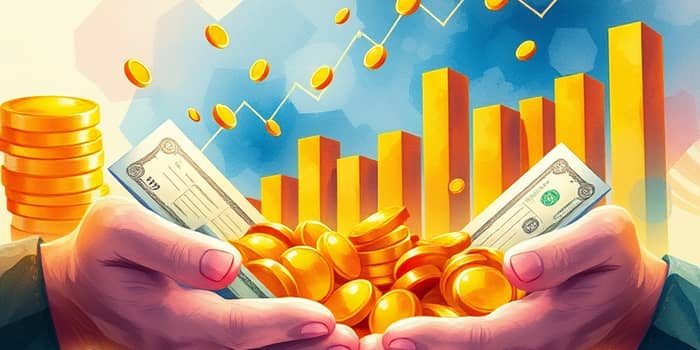
In early 2025, dividend-paying equities have reignited investor interest amid a climate of climbing interest rates and shifting market dynamics. As bond yields and short-term rates trend upward, income-focused strategies are drawing renewed attention from those seeking stability and income.
After underperforming for much of 2024, dividend strategies have outpaced the broader stock market year-to-date, underscoring their appeal in a rising-rate environment.
Climbing rates present a double-edged sword for dividend investors. On one hand, higher yields from bonds, Treasury bills and certificates of deposit can lure capital away from equities. As of Q2 2022, for example, the 10-year Treasury yield hit 2.5% compared with a 1.4% S&P 500 dividend yield, making fixed income more competitive.
On the other hand, companies carrying significant debt burdens—common in utilities and real estate investment trusts—face increased borrowing costs and pressure on profitability. This may force cuts or freezes in distributions if earnings growth cannot absorb higher interest expenses.
Moreover, a stronger U.S. dollar can erode foreign earnings for multinational dividend payers, potentially squeezing cash flows used for dividends.
Certain industries have surged ahead in delivering income and stability, while others have lagged:
Data from 2005 through 2015 highlights that dividend growth stocks, such as the S&P 500 Dividend Aristocrats, consistently outperformed high-yield counterparts. Even during both rising and falling rate cycles, companies that regularly raise payouts tend to deliver stronger total returns.
For instance, in Q1 2021, S&P 500 dividend raisers achieved an average year-to-date return of +10.24%, while dividend cutters averaged -3.26%. This demonstrates the value of focusing on businesses with durable cash flows and payout discipline.
Pursuing the highest yields without assessing balance sheet strength can lead to disappointments. Companies paying out more than 80% of their earnings often face payout cuts if revenues falter.
Investors should scrutinize coverage ratios and cash flow statements before committing to high-yield stocks.
Dividend announcements carry psychological weight, signaling management’s confidence in future earnings. However, on the ex-dividend date, a stock typically drops by the dividend amount, reflecting the transfer of value to shareholders.
While dividends provide a tangible cash return, investors must consider total return—capital gains plus distributions—rather than focusing solely on yield percentages.
For decades, higher-yielding equities outperformed their lower-yield peers. Yet, the broad market rally led by growth stocks over the past decade challenged this norm. In response, more large-cap technology names such as Meta and Alphabet have begun paying dividends, even if yields remain below 1%.
This trend suggests a potential shift in corporate payout policy as companies mature and seek to reward shareholders beyond share buybacks.
Academic research shows no consistent dividend outperformance during periods of high inflation or sharply rising rates. While dividends can offer a buffer, equities collectively face valuation pressures when input costs and borrowing expenses climb.
Investors should remain cautious about expecting dividends to fully shield portfolios from inflationary shocks.
Rising rates have brought dividend stocks back into the spotlight, particularly in stable sectors like utilities and financials. Yet, chasing yield without regard for fundamentals can lead to painful cuts.
By balancing yield, growth and financial strength, investors can navigate a rising-rate environment while capturing the benefits of dividend income and potential price appreciation.
References













